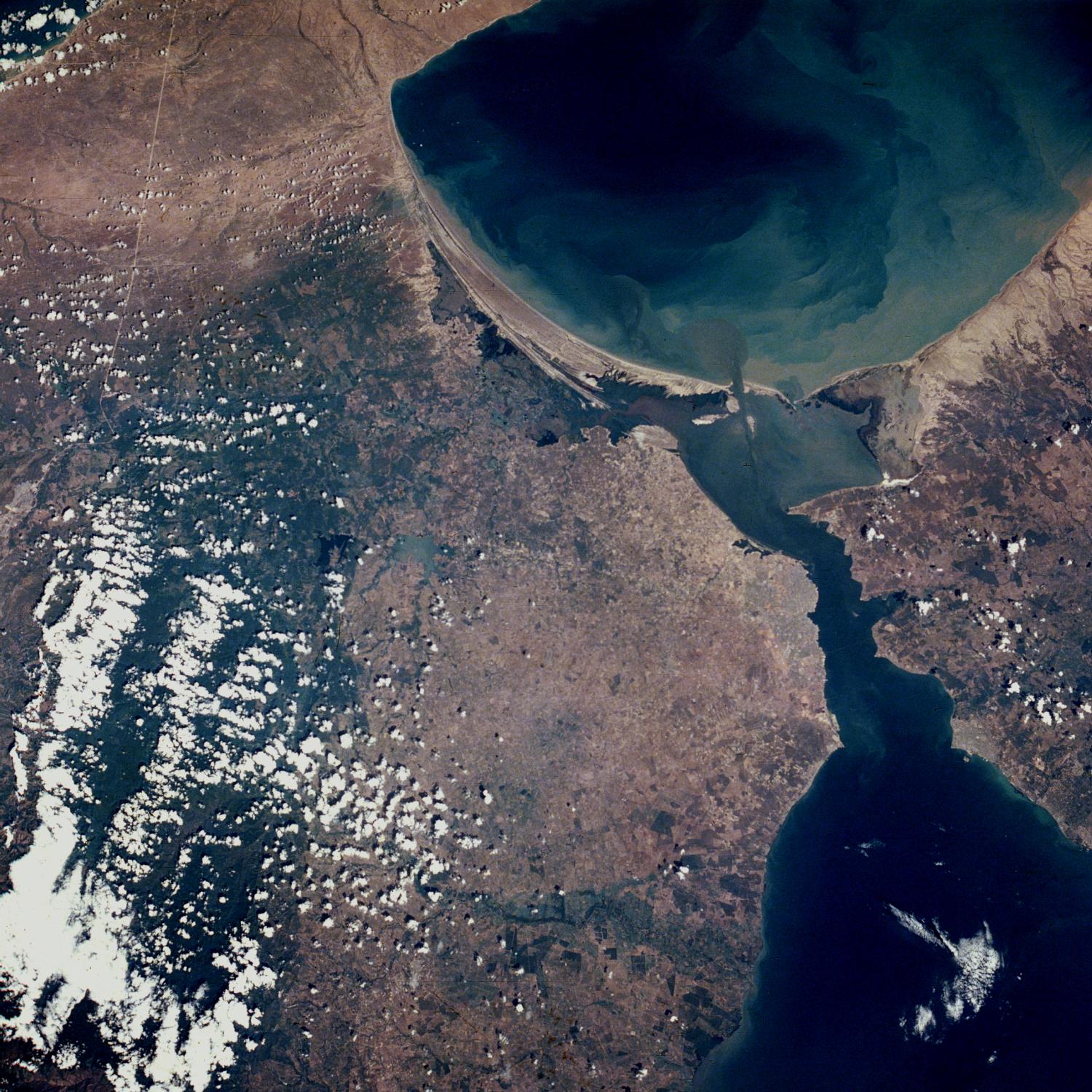|
|
Satellite Image, Photo of Maracaibo City & Lake Area, Venezuela, January 1990 |
|

Lake Maracaibo Area, Venezuela January 1990. Maracaibo, Venezuela’s second most populous city with more than 1.5 million, sits along the western edge of the strait connecting Tablazo Bay with the northern end of Lake Maracaibo. The short-flowing Palmar River and its delta can be seen on the northwest side of Lake Maracaibo. The Gulf of Venezuela, shown with sediment swirls immediately north of Tablazo Bay, provides a natural water route into the Caribbean Sea. Sandy beaches lie along the southern margin of the Gulf of Venezuela. Most of the landscape around the Maracaibo area is classified as lowlands. The darker, densely vegetated area, partially obscured by clouds west of Maracaibo, are the Perijá Mountains, part of the northern extension of the Andes Mountains. These mountains, with some elevations exceeding 10 000 feet (3050 meters) above sea level, form part of the boundary between Venezuela and Colombia. The very thin line along the northwestern edge of the photograph appears to be a northeast-southwest-aligned railroad right-of-way that crosses the Guajira Peninsula in Colombia. Since the early 1900s, the production of oil has been Maracaibo’s major economic asset. Most of the oil comes from Lake Maracaibo and, to a lesser extent, from the Gulf of Venezuela.
|
Maracaibo City Maps
Maracaibo, Gulf of Venezuela, Bay of Tablazo Satellite Photos
|